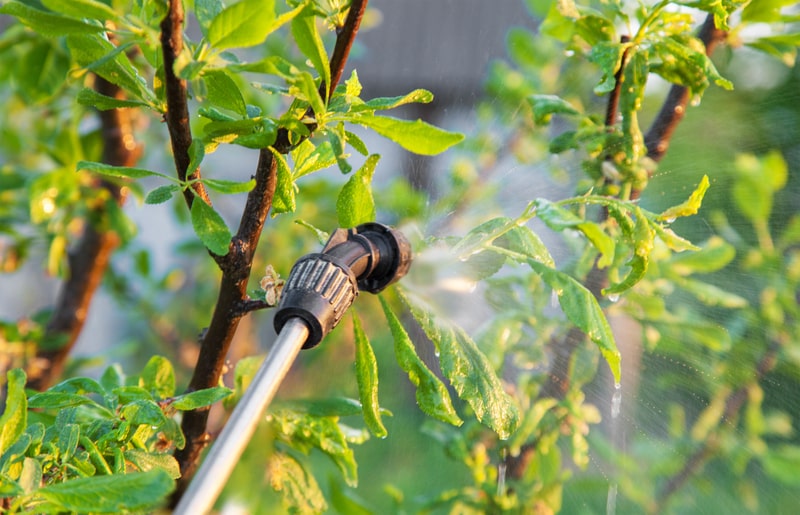
Introduction to Tree Insect Control
Check it out – trees are not only susceptible to diseases but also face threats from a variety of insect pests that can wreak havoc on their health and vitality. Effective tree insect control is essential for protecting trees from damage and preserving their beauty and longevity. Let’s delve into the world of tree insect control and explore the strategies for safeguarding trees against these tiny but formidable adversaries to get check it out.
I. Understanding the Threat of Tree Insects
A. Understanding the Threat of Tree Insects
Tree insects pose a significant threat to the health and well-being of trees by feeding on foliage, bark, and sap, and transmitting diseases. These pests can weaken trees, stunt growth, and even lead to their eventual decline or death if left unchecked. Understanding the biology and behavior of tree insects is essential for implementing effective control measures.
B. Importance of Effective Tree Insect Control Measures
Effective tree insect control measures are essential for maintaining the health and vitality of trees in urban and natural landscapes. By managing insect populations and minimizing damage, tree owners can protect their investments, preserve ecosystem services, and ensure the long-term sustainability of tree populations.
C. Overview of Common Tree Insect Pests
Numerous insect pests pose threats to trees, including aphids, beetles, caterpillars, scales, and borers, among others. Each species has its own feeding habits, life cycle, and preferred host plants, making it crucial to identify the specific pests affecting trees to implement targeted control strategies.
II. Identifying Tree Insect Infestations
A. Signs and Symptoms of Tree Insect Damage
Signs of tree insect damage may include yellowing or wilting foliage, premature leaf drop, abnormal growth patterns, holes or tunnels in the bark, and the presence of insect pests or their eggs. By recognizing these symptoms, tree owners can take proactive measures to address insect infestations before they escalate.
B. Conducting a Visual Inspection for Tree Insects
Visual inspections are an essential tool for identifying tree insect infestations and assessing the extent of damage. Tree owners should carefully examine leaves, branches, and trunks for signs of insect activity, paying close attention to areas where insects are most likely to feed or lay eggs.
C. Utilizing Monitoring Techniques for Early Detection
Monitoring techniques such as sticky traps, pheromone traps, and tree banding can help tree owners detect insect pests early and monitor population dynamics over time. Regular monitoring allows for timely intervention and prevents insect populations from reaching damaging levels.
III. Methods of Tree Insect Control
A. Cultural Control Practices for Managing Tree Insects
Cultural control practices, such as proper tree selection, planting, and maintenance, can help reduce the risk of insect infestations and improve tree resilience. Practices such as pruning, mulching, and watering can promote tree health and vigor, making trees less susceptible to insect pests.
B. Biological Control Agents for Natural Pest Management
Biological control agents, such as predatory insects, parasitic wasps, and microbial pathogens, can be used to naturally suppress tree insect populations. These biological agents target specific pests without harming beneficial insects or causing harm to the environment, making them an environmentally friendly option for pest management.
C. Chemical Control Options for Targeted Treatment
Chemical control options, such as insecticidal sprays, baits, and systemic insecticides, can be used to target and eliminate tree insect pests. When used judiciously and according to label instructions, chemical control methods can effectively manage insect infestations while minimizing risks to human health and the environment.
IV. Implementing Integrated Pest Management (IPM) Strategies
A. Understanding the Principles of Integrated Pest Management
Integrated Pest Management (IPM) is a holistic approach to pest management that emphasizes prevention, monitoring, and control strategies to minimize the impact of pests on trees. IPM integrates multiple tactics, including cultural, biological, and chemical controls, to effectively manage pest populations while minimizing environmental risks.
B. Developing an IPM Plan for Tree Insect Control
Developing an IPM plan for tree insect control involves assessing pest risks, implementing preventive measures, monitoring pest populations, and selecting appropriate control strategies as needed. By tailoring control tactics to the specific needs of each tree species and site conditions, tree owners can achieve sustainable pest management outcomes.
C. Benefits of Integrated Pest Management Approaches
The benefits of integrated pest management approaches include reduced reliance on chemical pesticides, minimized environmental impacts, and improved long-term pest control outcomes. By promoting ecological balance and enhancing tree health and resilience, IPM strategies contribute to the overall sustainability of tree ecosystems.
V. Conclusion: Ensuring Healthy and Resilient Trees Through Effective Insect Control
In conclusion, effective tree insect control is essential for preserving the health, beauty, and longevity of trees in urban and natural landscapes. By understanding the threats posed by tree insects, identifying infestations early, and implementing integrated pest management strategies, tree owners can safeguard their investments and promote the vitality of tree populations. Through proactive management and sustainable practices, we can ensure that our trees remain resilient in the face of insect pests and continue to provide numerous benefits to our communities and the environment.


